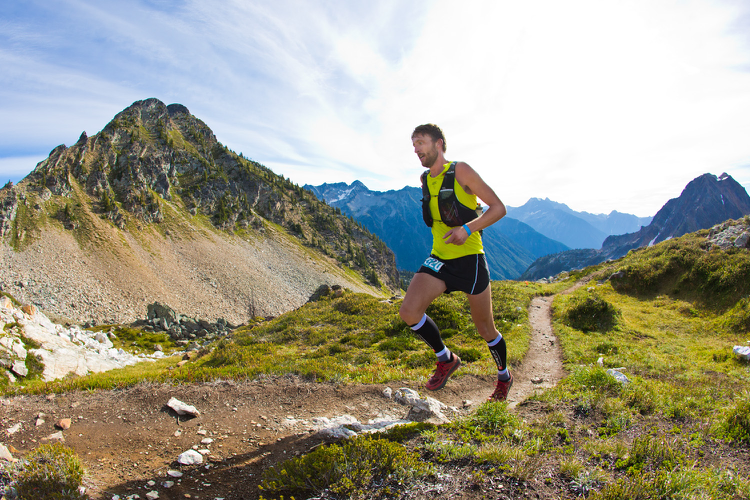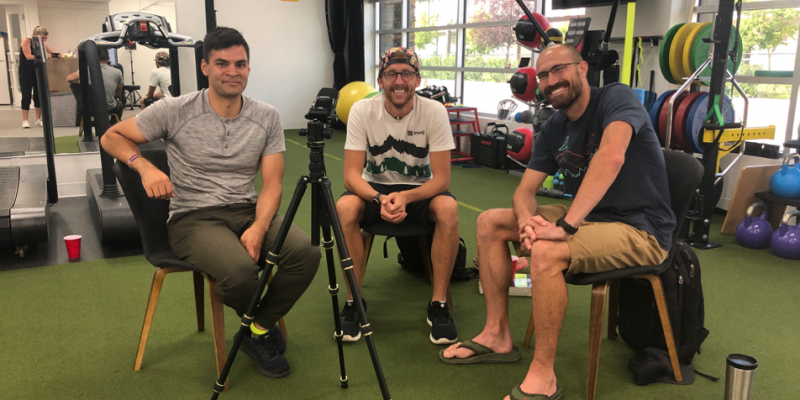Have you ever wondered what a physical therapist thinks about all of the hype around certain footwear trends? We have, so we sat down with Dr. Zac Marion DPT about his unique perspective on the topic.
What makes Zac’s perspective unique is that prior to going back to graduate school to complete his doctorate in physical therapy, Zac was the product line manager for one of the shoe companies responsible for the paradigm shift in the running shoe industry – Altra Running.
In addition to being a physical therapist and one of the first employees at Altra, Zac is a coach for the treadmill app iFit. This platform enables Zac to help people from all over the world to live active lives – even if they are limited to a treadmill. In fact, the program follows Zac and other coaches to distinct sites across the globe to access spaces that may not be accessible to many (Mt. Kilimanjaro, New Zealand, Greece, etc.)
To see Zac run now, one would expect that he grew up running, be he actually didn’t grow up playing sports. In fact, it was less than a decade ago that he made the choice to switch from a sedentary lifestyle that led to obesity to a more active lifestyle that has led him to stand atop the podium of many ultramarathons.

As a result of the benefits Zac found through running and the running community, Zac is all about promoting community health. iFit is a way for Zac and others to access parts of the world and move without some of the other impediments to activity. Running and iFit have provided Zac with a platform to help others move.
Advancements in technology, specifically the Internet, have enabled each of us (Zac, Malc, and Jacob) the ability to work with people from all over the world and for people from all over the world to work with experts even if they don’t live in the same area as them. We are able to do so much more now than we were even able to do just a few years ago.
Zac went back to school because he feels that it’s important to have a strong framework when it comes to evaluating bodies, theories, and fads so that we don’t always land on one side of the continuum or the other.
In this episode we discuss the importance of a comprehensive team to help each individual maximize their potential. “To just do physio and just treat people is not the full service. Athletes need to be able to access the full suite of services – not just focus on the cardiovascular system or the musculoskeletal system.”
“Compliance is an issue when it comes to a clinic setting. However, if you approach the individual from a coaching perspective with the treatment and physical therapy the compliance is greater and there is greater accountability.”
Jacob explains what motivated him to make a career change and begin coaching full-time.
Zac shares his epiphany about a sedentary life vs. an active lifestyle that occurred ironically while sitting so long as a graduate student studying about the need for movement to avoid so many of the ailments that plague society today.
From the perspective of a physical therapist and/or exercise scientist and runner, what is the value of zero drop technology? Why zero drop and / or why not?
We are bipedal beings that either outlasted predators or prey. More in Born to Run.
An unrestricted human body can learn to be efficient. A zero drop shoe can help a restricted body get to a more efficient stride and heel strike.
However, the transition from 12mm (standard running shoe heel height) to zero drop is a lot for a tendon that is not accustomed to stretching. If someone wants to transition to zero drop, they should gradually transition from more traditional running shoes to zero drop a few millimetres at a time.
Zac explains that he is now running for another brand, Topo Athletics, that is designed to provide an incremental transition from more traditional heel to toe drops to zero drop.
As a coach and physical therapist, Zac’s goal is to keep people moving. If a person needs to stay in a 12mm drop shoe because that’s what keeps them moving then that’s what’s best for them.
“We can talk about ideal form all day long, but at the end of the day our sedentary lifestyles don’t set most of us up for ideal.”
As coaches and clinicians we need to look at less of a one answer for everybody to what is best for the individual.
Scientifically the zero drop philosophy makes perfect sense. It just doesn’t work for everyone. (Here’s another article advocating for variety in footwear). That being said, Altra has transformed the entire shoe industry. Most major brands have made adjustments to the heel to toe drop in at least some models and many are also adjusting the forefoot to allow for a more natural splayed fit.
What are the most common running injuries that you encounter and what are some things that runners can do to avoid these injuries?
“Outside of the acute injury of rolling one’s ankle, there are a lot of knee issues due to overloading the quads and not getting into the posterior chain enough.
“One of the things that can help runners avoid these types of injuries is to increase mobility in joints. Injuries generally revolve around a joint. The purpose of muscular contractions is to move a joint with force. The issue generally comes from a limitation in joint mobility.”
Zac distinguishes between mobility and flexibility:
“Flexibility is the ability to, for example, grab your leg and pull it over your head. You have a full range of motion in your hip and you can assist your body in performing the action.
“Mobility is the opportunity to have strength and power throughout that entire range of motion. So flexibilty would be grabbing your leg and pulling it over your head whereas mobility is the ability to do that without touching your leg. You’re using your own musculature to go through that entire range of motion. It’s going to require a neuromuscular component and a strength component.”
Zac sees a lot of injuries due to lack of range of motion in the hips and hip flexors due to the sedentary lifestyle of most people. This leads the glutes to get knocked out the equation. Zac explains, “If there is 100% of a job that needs to get done and there are five muscles that are to cover 20% of the job each and one of those muscles gets knocked out then the other four muscles are overextending themselves and having to make up for what the other one was supposed to be doing. The hips never shut off because we are never getting out hips behind us and we are overspending on our quads. Now that patellar tendon is taking more stress than it should be taking.”
The majority of the injuries that physical therapists see see are overuse / over stress injuries.
“We can preach form all day long, but if you don’t have the mobility to utilize that form it’s not going to mean anything. You’re actually going to do more damage trying to adapt to the stress by being unprepared for proper form in one day.”
Mobility limitations cause patellar tendonitis and achilles tendonitis. The best thing you can do as an athlete is to do all of the extra little things and not just focus on the run. Are you getting the nutrition that you need after the run? Are you doing the work on a foam roller? Are you stretching before and after? Are you warming up properly and adequately? The biggest little thing that you can do is to take care of your muscles so that they aren’t pulling on tendons and ligaments. Focus on mobility.
To learn more about Zac you can find him on Instagram @zacmarion or look for Coach Zac’s workouts on iFit. https://www.ifit.com/blog/ifit-trainer-highlight-zac-marion/
All of this and more in Episode 5 of the Art and Science of Running Podcast.
Intro and outro music by Dallin Puzey, GOIN 4 A WALK.
Please listen, subscribe and rate this podcast on Apple Podcasts, Spotify, Stitcher, YouTube, or wherever you listen to podcasts.
Please follow us on Twitter, Instagram, and Facebook and let us know what you’d like us to discuss in future episodes.
Podcast: Play in new window | Download
Subscribe: Apple Podcasts | RSS | More
